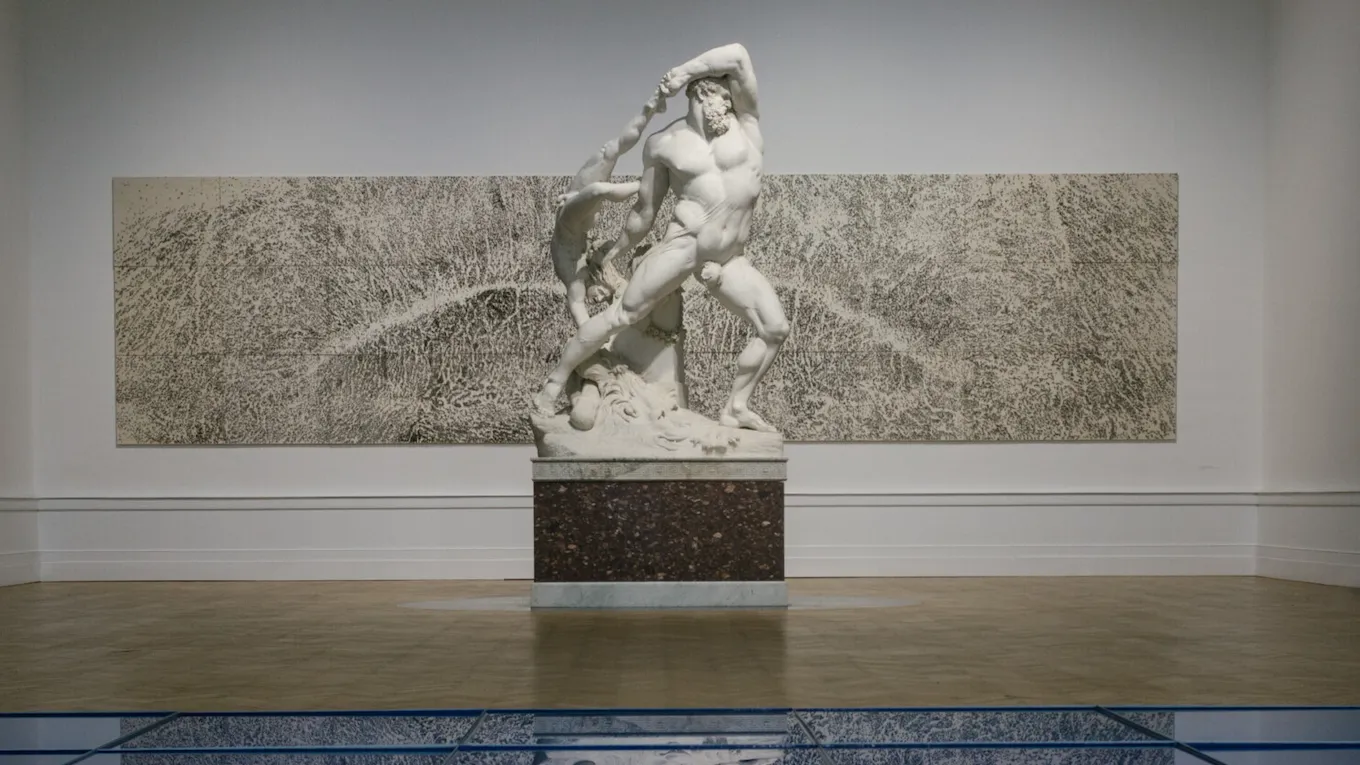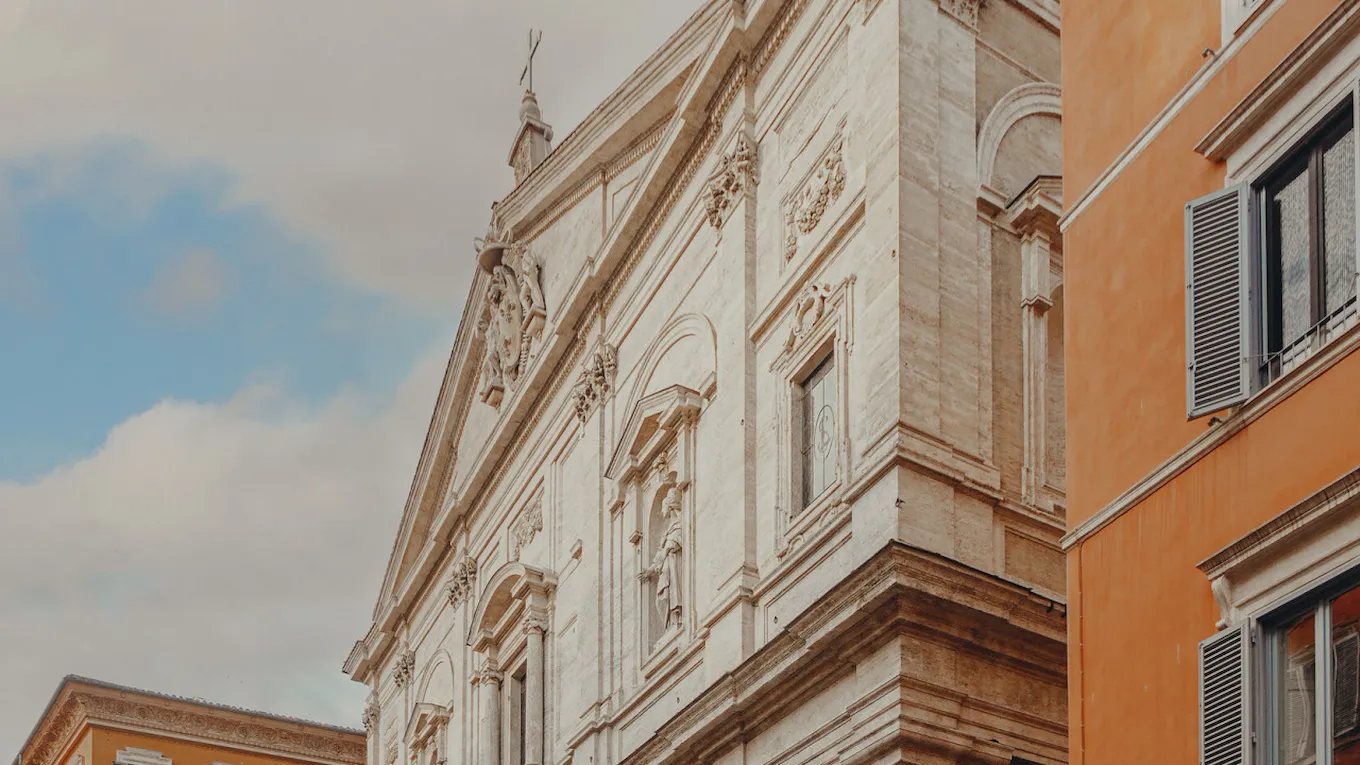An art lover’s guide to Rome, with Olimpia Isidori

What inspires you in Rome?
The city is an open-air museum, art and history can be found at every corner under a canopy of clear-blue skies. I probably wouldn’t have become an art historian if I hadn’t grown up in Rome, infusing me with curiosity right from childhood. I remember being in complete wonder as a young child visiting the Pantheon. I couldn’t understand how there could be a hole in the middle of a fully concrete dome! As a masterpiece of technical Roman prowess, I always make a detour to see it as the way the light reflects inside is never the same – it’s truly spellbinding.
Do you consider Rome your home?
It is, rather excessively stated, that in order for one to be regarded as a true Roman you must have seven generations of Romans before you! Despite it being rather difficult to fit that category, having a Parisian mother and a father from Le Marche region, I do call Rome my home having spent most of my life here. Rome has witnessed and welcomed multiculturalism since its very foundations, and the beauty of the city continues to evolve. It’s a place like no other.
What role do you play in the art world?
I’m an art historian and an art consultant. After my degrees at Courtauld Institute of Art, I spent a decade working in the fascinating world of auction houses, specifically at Sotheby’s in London. I now help guide new and more established collectors to buy or sell artworks and to take care of their artworks, such as managing their collection and overseeing authenticity, restoration, research, transportation, insurance and more.
Is the art scene in Rome past its golden age?
It’s easy to fall into the trap that time in Rome stopped 500 years ago. Despite the number of wonderful Palazzo’s and galleries showcasing old masters and antiquities, the city has welcomed international contemporary galleries over the years such as Gagosian and Galleria Lorcan O’Neill. There’s a myriad of smaller galleries too such as Ermes Ermes, Monitor and Magazzino, which add to the thriving art scene and catapult art in the city into the 21st century.
Can you share any art hidden gems with us?
Away from the crowds and often overlooked, Galleria Nazionale d’Arte Moderna e Contemporanea is one of my favourite museums, home to works from masters of modernity such as Van Gogh, Manet, Modigliani, Fontana and so many others. Centrale Montemartini is a must-see; housed in a former power plant of the early 20th Century, it has an extraordinary collection of Roman artefacts, mosaics and sculptures – the contrast is fascinating. If you want to really take a step back in time, with Caravaggio, Velàzquez and a Raphael adorning the walls of a private residence (don’t skip the velvet room), head to the incredible art collection at Palazzo Doria Pamphilj.
What’s your favourite spot to sit and watch the world go by?
The mythical Bar Rosati in Piazza del Popolo was a stomping ground for young radical artists in the 1960s, including Mario Schifano and Giosetta Fioroni, whose group ended up being aptly called ‘the School of Piazza del Popolo’. You could have easily also spotted Federico Fellini and Pier Paolo Pasolini and, to this day, the café has retained all of its allure and old school glamour in one of the most spectacular piazzas in the city. Obviously, Caravaggio is never too far away so when you have sipped your cappuccino or Campari, make your way across to Basilica of Santa Maria del Popolo – another of his mesmerising masterpieces is housed in the Cappella Cerasi.
What fascinates you most about Caravaggio?
Despite having lived over 500 years ago, Caravaggio’s story is so contemporary: that of a painter who truly believed in his art, talent and his message. Despite a tragic end, he had incredible skill, determination and more than a dash of disruptiveness – which possibly made him into a very charismatic and magnetic character to be around. He painted like no other before him and continues to inspire artists, photographers and cinematographers.
How can I recognise a Caravaggio?
Caravaggio’s style is immediately recognisable – look out for his inimitable use of light, adding depth and drama to his works and ‘chiaroscuro’ (meaning light-dark). Chiaroscuro is exactly the technique which set him apart from anyone else – specifically the use of a dark background with brightly illuminated figures in movement. As if lit from within, his works become impressed in your mind through their strength of imagery, colour and movement. For me, they are worth visiting again and again.
What makes the Caravaggio – Rebel and Rome tour memorable?
Guests are truly immersed and enthralled in the city and Caravaggio’s art. You really get to see and experience Rome in all its splendour and inherent contrasts, from its narrow alleyways to the majestic sight of grandiose palazzos. The city centre, minus the buzzing Vespas, is actually remarkably close to the one that Caravaggio would have seen.
What’s your top tip for exploring Rome?
Rome has so many hidden gems so the secret is never doing the same route twice. Getting lost is probably the best way to discover the city, and always have a peek in that church you stumble upon as you never know what you might find.
Journey back in time with Olimpia Isidori’s Caravaggio – Rebel and Rome trail when you stay at Hotel Eden. Together you can explore the ground-breaking artist’s very own stomping ground in Rome – from his highs, lows and ultimately to the fateful tennis match that spelt his exile from the city.

Hotel Eden
Caravaggio – Rebel and Rome
Caravaggio’s rags to riches life was as dramatic and distinctive as his paintings. Journey back in time with our expert to explore the ground-breaking artist’s very own stomping ground – taking in his highs, lows and eventual exile from the city.